.

Two House Democrats have proposed legislation that would establish a national historical park on the surface of the moon to mark where the Apollo missions landed between 1969 and 1972.
.
The bill from Reps. Donna Edwards (D-Md.) and Eddie Bernice Johnson (D-Texas) would create the Apollo Lunar Landing Sites National Historical Park. The park would be comprised of all artifacts left on the surface of the moon from the Apollo 11 through 17 missions.
The bill says these sites need to be protected because of the anticipated increase in commercial moon landings in the future.
"As commercial enterprises and foreign nations acquire the ability to land on the Moon, it is necessary to protect the Apollo lunar landing sites for posterity," according to the text of the Apollo Lunar Landing Legacy Act, H.R. 2617.
Under the legislation, the park would be established no later than one year after the bill passes and would be run jointly by the Department of the Interior and the National Aeronautics and Space Administration (NASA).
The measure would allow the government to accept donations from companies and foreign governments to help manage the landing sites and "provide visitor services and administrative facilities within reasonable proximity to the Historical Park."
After one year, Interior and NASA would have to reach an agreement on how to manage the site, including how to monitor it, managing access to the sites and cataloguing the items in the park.
The government would also have to submit the Apollo 11 lunar landing site to the United Nations for designation as a World Heritage site.
Both Edwards and Bernice Johnson are members of the House Science, Space, and Technology Committee. Bernice Johnson is the panel's ranking member.
Edwards, the ranking member on the House Space Subcommittee, also proposed legislation on Monday to reauthorize NASA for three years. That bill, H.R. 2616, authorizes spending of $18.1 billion in 2014 for NASA, which rises to $18.9 billion in 2016.
Aside from boosting NASA's budget, the bill also sets as a goal a human mission to Mars and maintains a commitment to funding International Space Station operations through 2020.
.
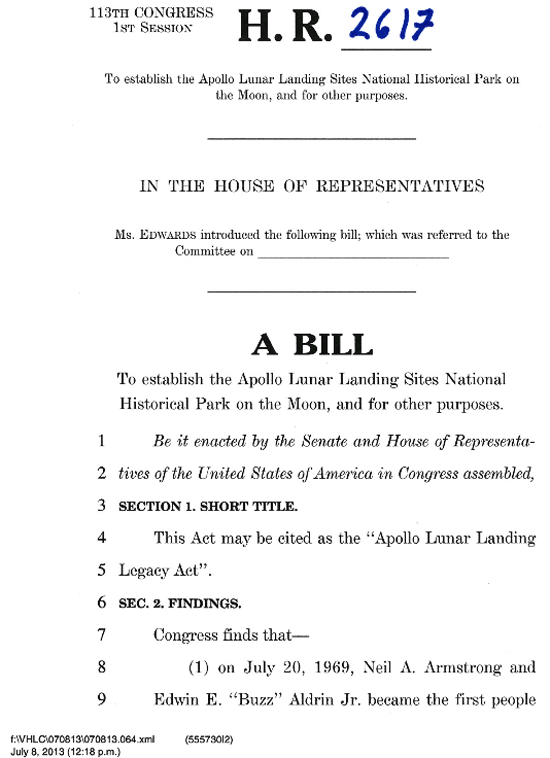
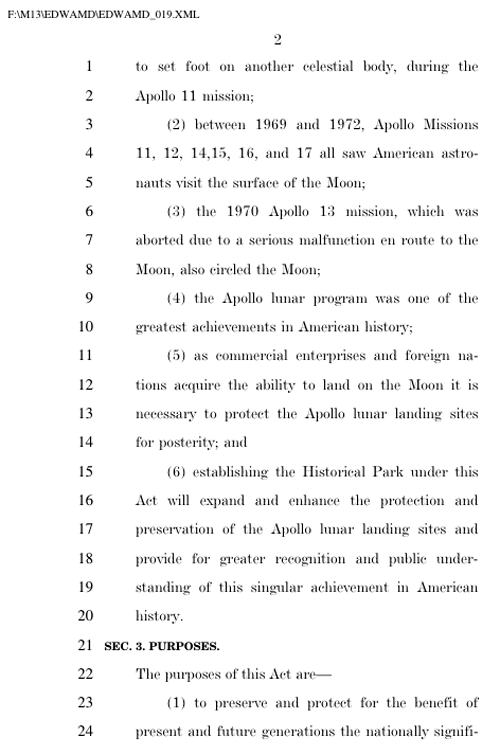
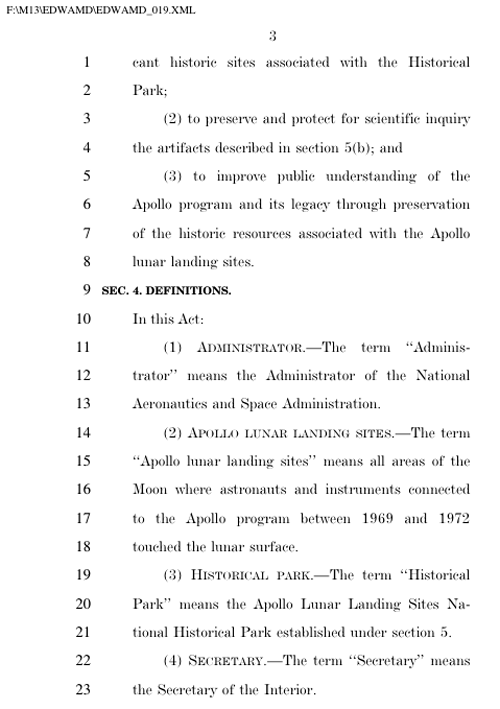
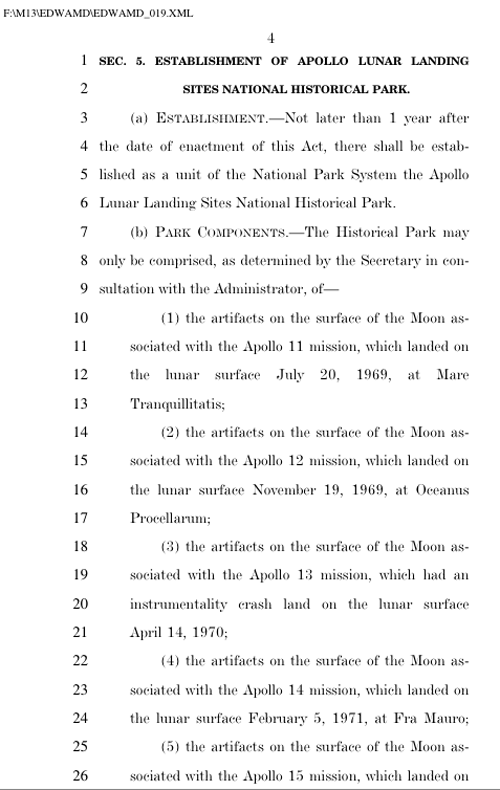
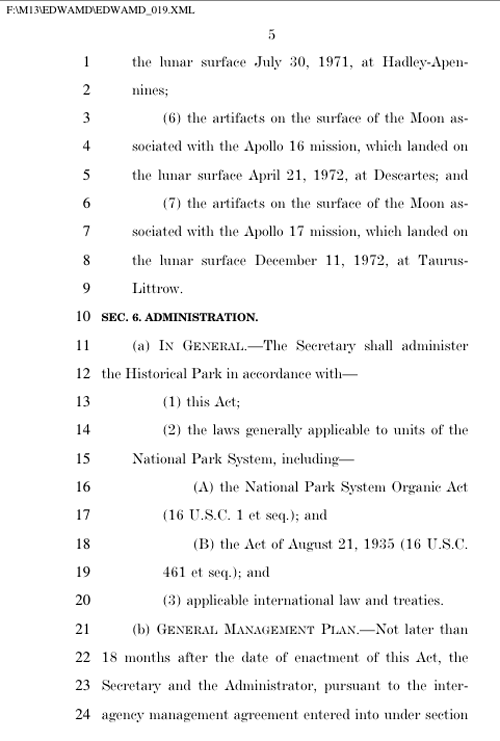
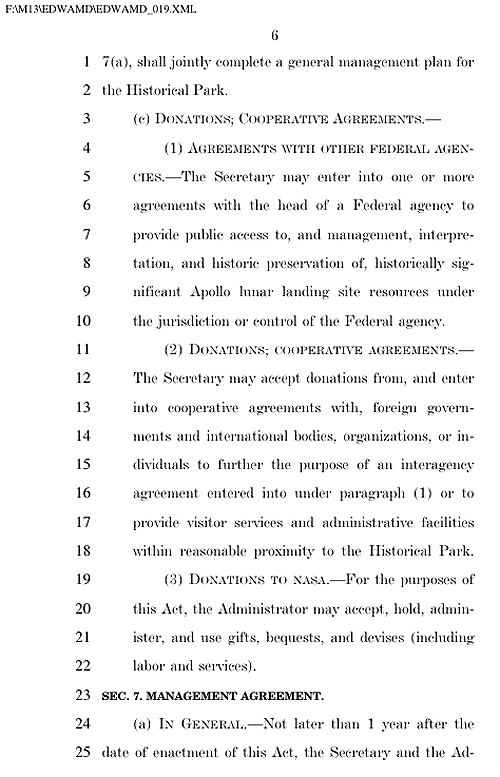
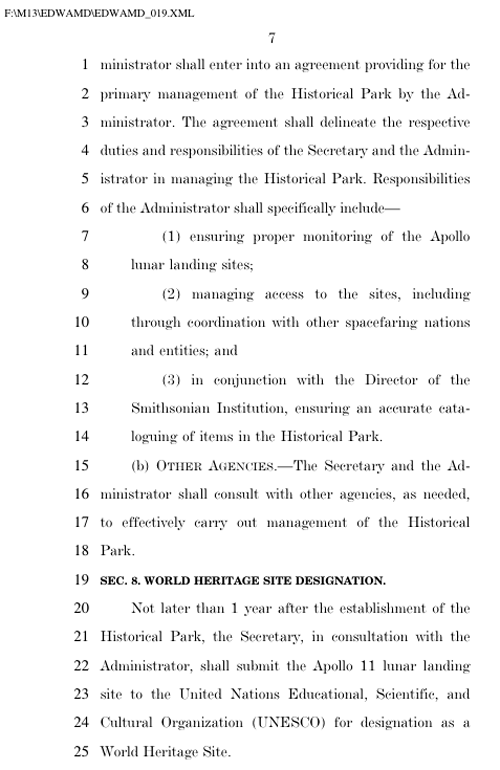
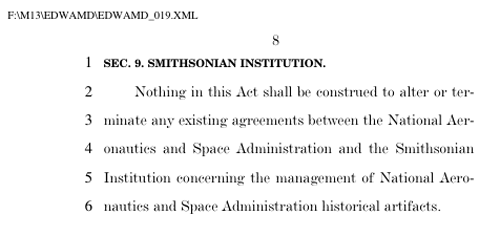
Quelle: The Hill
.
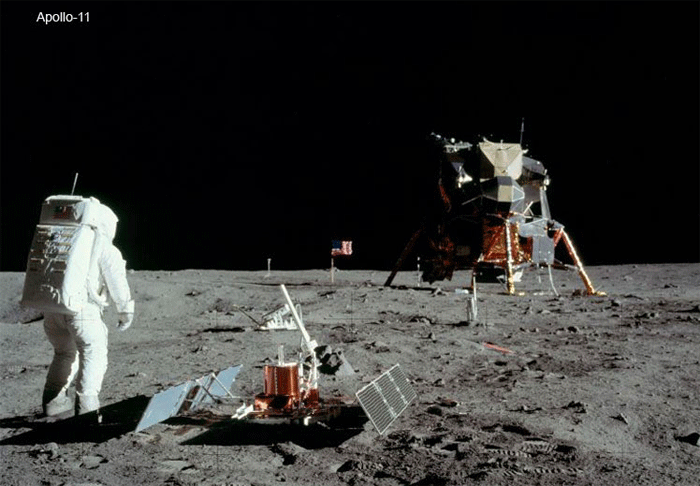
Foto: NASA
5577 Views
